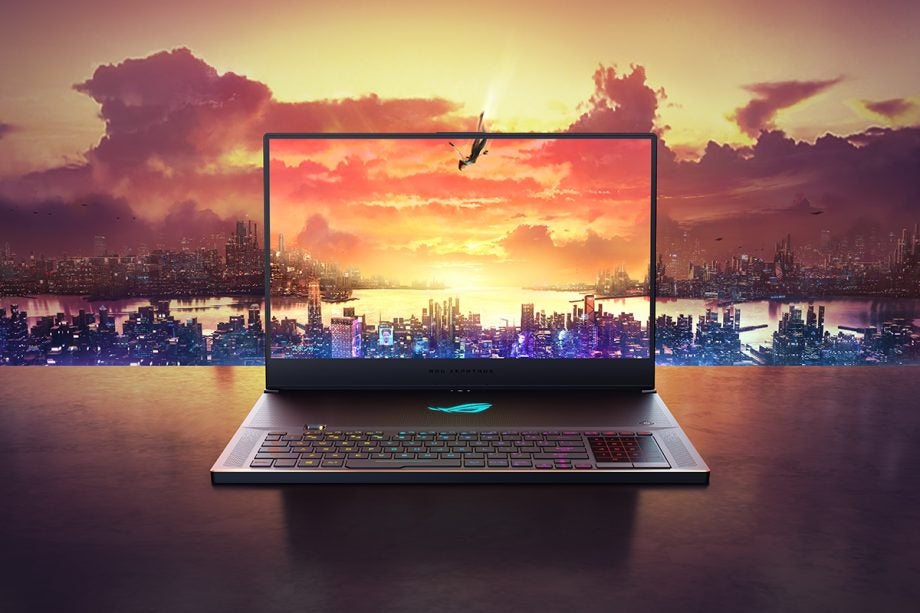Nvidia levels up gaming laptops with ‘Super’ upgrades

Nvidia has announced mobile versions of its RTX Super graphics cards, increasing the potential graphics performance of gaming laptops.
Both the RTX 2070 Super and RTX 2080 Super GPUs will be made available to laptop manufacturers, with multiple brands such as Predator, MSI and Gigabyte already confirming RTX Super devices.
The announcement means the standard RTX 2080 GPU will no longer be integrated into future gaming laptops, with the “Super” variant completely replacing it. However, the non-Super RTX 2070 will still be available as a cheaper alternative.
While Nvidia provided a full rundown of the specs for the RTX Super GPUs, the company offered little detail about the performance gains expected. Given that performance figures can vary dramatically depending on the laptop design and specs, it’s understandable. But with an increase of CUDA cores on the Super GPUs, you can expect a noticeable performance gain.
Related: Intel 10th Gen H-series processors
| RTX 2070 Super | RTX 2070 | |
| Nvidia CUDA Core | 2560 | 2304 |
| Boost Clock (MHz) | 1155 – 1380 | 1125 – 1455 |
| Memory configuration | 8GB GDDR6 | 8GB GDDR6 |
| Memory interface Width | 256-bit | 256-bit |
| Memory Bandwidth | Up to 448 GB/s | Up to 448 GB/s |
| Total Graphics Power (W) | 80 – 115 W | 80 – 115W |
| RTX 2080 Super | RTX 2080 | |
| Nvidia CUDA Core | 3072 | 2944 |
| Boost Clock (MHz) | 1080 – 1560 MHz | 1380 – 1590 |
| Memory configuration | 8GB GDDR6 | 8GB GDDR6 |
| Memory interface Width | 256-bit | 256-bit |
| Memory Bandwidth | Up to 448 GB/s | Up to 448 GB/s |
| Total Graphics Power (W) | 80 – 115 W | 150 W |
Related: Best gaming laptops 2020
These Super GPUs will no doubt find a home in gaming laptops but Nvidia was also keen to stress that they can also be used in creative-focused RTX Studio laptops. In fact, Nvidia suggested the RTX 2080 Super will offer a significant performance advantage over the MacBook Pro 16’s GPU for creative applications such as Adobe Premiere Pro, DaVinci Resolve and Blender.
The company also confirmed the launch of the GTX 1650 Ti laptop GPU, providing another cost-effective option for Full HD gaming. It looks to be a smart move by Nvidia, with the standard GTX 1650 often guilty of failing to offer respectable frame rates in Full HD.
Of course, we won’t be able to make any recommendations until we’ve actually tested them. We’ll be reviewing numerous laptops featuring Nvidia’s three upcoming mobile GPUs in the coming weeks.
| GTX 1650 Ti | GTX 1650 | |
| Nvidia CUDA Core | 1024 | Up to 1024 |
| Boost Clock (MHz) | 1200 – 1485 | 1125 – 1560 |
| Memory configuration | 4GB GDDR6 | 4GB GDDR6 / GDDR5 |
| Memory interface Width | 256-bit | 256-bit |
| Memory Bandwidth | Up to 192 GB/s | Up to 192 GB/s |
| Total Graphics Power (W) | 35 – 55 W | 30 – 50 W |
Related: Nvidia Ampere
The announcements didn’t stop there. Nvidia also confirmed several additional upgrades that will benefit all future Max-Q gaming laptops. Firstly, it revealed 300Hz displays are on the way, pushing up the potential refresh rate to staggering heights that will no doubt please competitive gamers.
Nvidia also claimed new laptops featuring its GPUs will become more efficient than ever before, thanks to incredible innovations including Dynamic Boost and Advanced Optimus.
Dynamic Boost will allow laptops with Nvidia and Intel components to balance the power between the GPU and CPU more efficiently. This means that if a laptop is running a game that is GPU-optimised, it will be able to allocate more power to the graphics card or vice versa if a game is CPU optimised. Nvidia claims this will potentially boost performance and up the frame rates.
Advanced Optimus, meanwhile, allows laptop owners to switch between the dedicated and integrated GPU with a dynamic display switch. This would enable folk to extend the battery life of the laptop when not used for gaming, increasing the versatility of such laptops as a result. This would also allow manufacturers to support up to 4K 120Hz displays with G-Sync technology.


